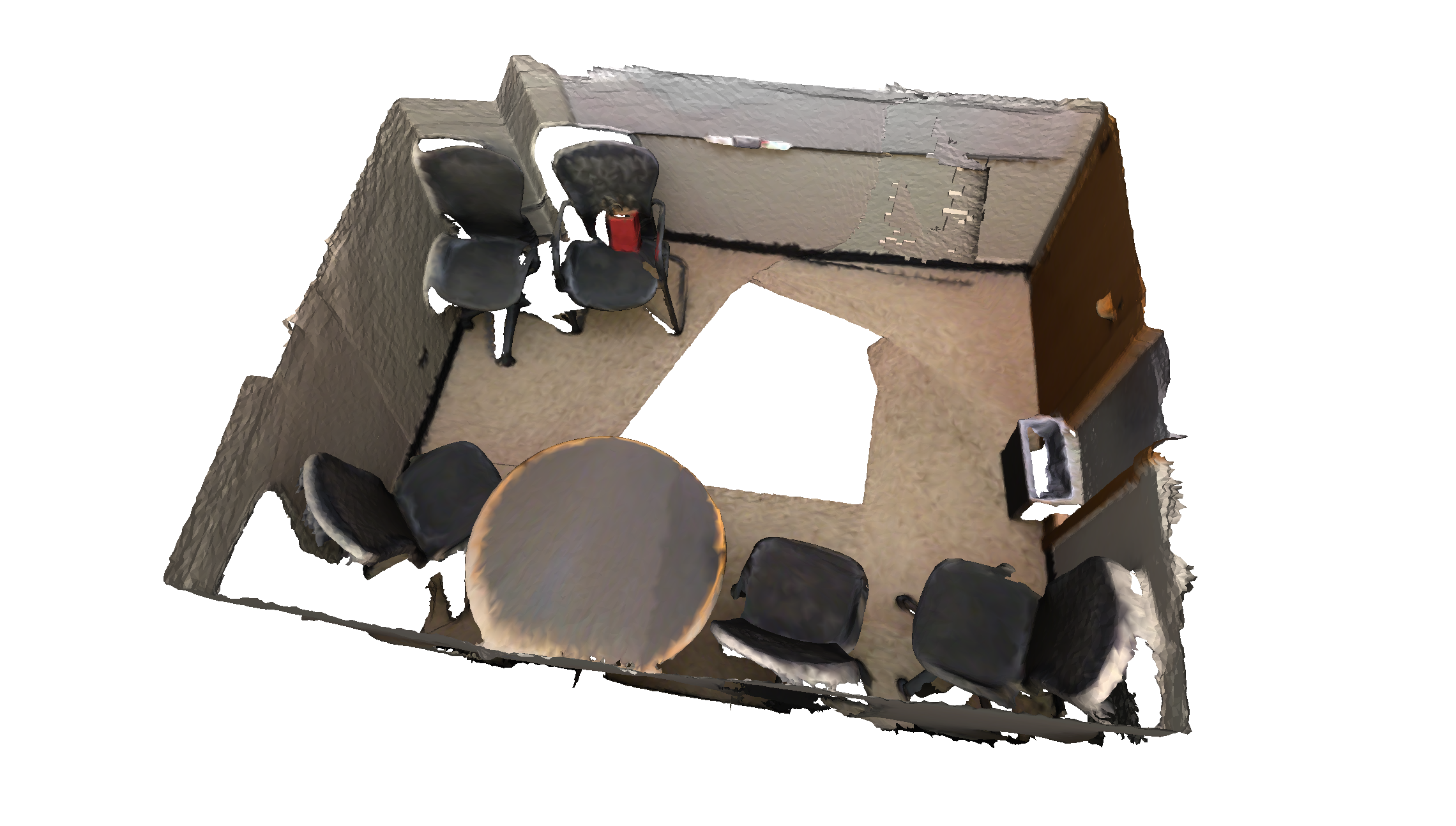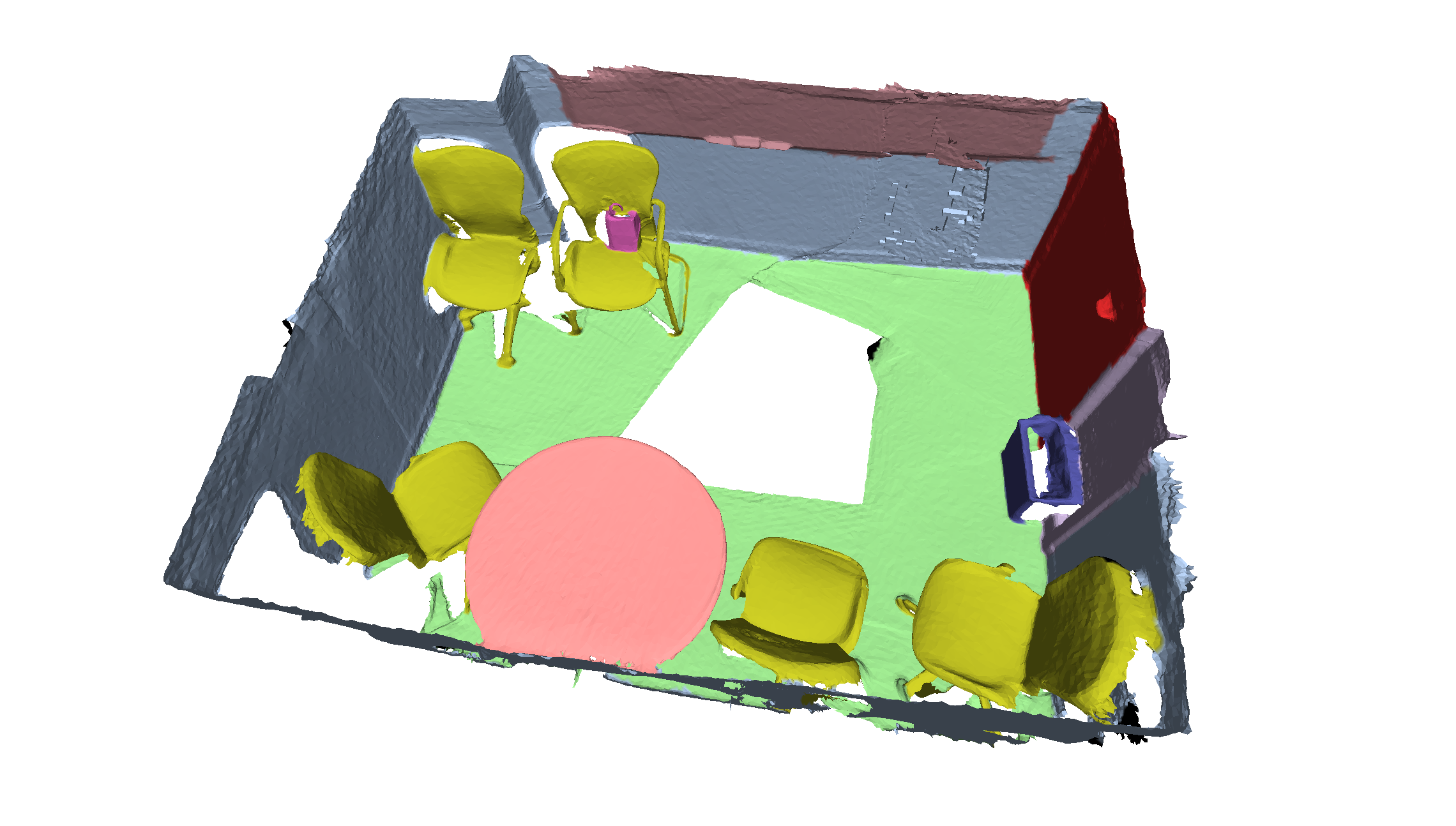Annotation webapp used in the research project Scan2CAD: Learning CAD Model Alignment in RGB-D Scans:
- Clone this repo
cd repo-name(enter downloaded repository folder)- Install
nodejs(=npm) from https://nodejs.org/en/ - Run
npm installfor client-side andcd ./server/ && npm installfor server side.- This will install all dependencies specified in
package.json
- This will install all dependencies specified in
- Run
./build.shto compile- Run
./watch.shto develop withjavascript(compiles with every change).
- Run
- Edit
./server/config.jsto specify your scan and CAD repository. Also edit themongodbdatabase to save the results. That means enter credentials to access yourmongodbserver (e.g. guest:guest ). - Run
./server/run.shto start the server. - Go to localhost:8080/Scan2CAD/menu
mongodb is a really nice app and works with javascript, python, c++, etc.. So very convinient to use, that's why we will store the annotation result in a mongo database:
- Install
mongodb - Login with
mongo admin - In the mongo shell create a db and a collection:
use scan2caddb.createCollection("correspondences")
- Now create a user to login:
use admindb.createUser({user : "guest", pwd : "guest", roles : [{role : "readWrite", db : "scan2cad"}]})show users
We used ScanNet as scan dataset and and ShapeNet as CAD dataset to do the annotations. If you want to use it too, then you have to send an email and ask for the data - they usually do it very quickly). However, you can your own datasets with the following steps:
- All the routing to the datasets is done in
./server/routing/. Type a name in./server/config.jsfordataset_scananddataset_cad. Example:dataset_scan="scannet"anddataset_cad="shapenet". Probably you will spend most of your time in the./server/routingfolder because that is where all the data to the webapp is served. - Create a
scannet.jsand ashapenet.jsfile in./server/routing. Those files will provide the webapp with the approriate meshes, textures, labels, thumbnails etc. - Create a
scannetandshapenetfolder in./server./static. In here you willsymlinkto your actual dataset.
You will notice some things that this app asks from you. Of course you can hack the source code and comment out the parts when it wants something from you (it's ok to do it).
For instance CAD models should have thumbnails. You can just comment out the loading of the thumbnails but the annotation process is much easier with thumbnails (see the video).
Also this webapp wants every CAD models to have two things:
- An
id_cad: An unique id per CAD model - A
catid_cad: a category id. For instancechairs=001,tables=002, etc. T
Internally it juggles around with both ids.
The webapp wants also something extra except the geometry mesh. That is, it asks for a semantically labeled mesh. This is needed because when you hover over the scan and click on a surface point, then the class name is looked up from the labeled mesh: such that you don't have to type it. See following image, (left) class labelled mesh (right) raw mesh
| ScanNet Color | ScanNet Labels |
|---|---|
 |
 |
If you cannot provide a labelled mesh or don't know how to do it. Then just comment out some parts of the source code or just provide a fake labelled mesh. The webapp will always then say "Maybe: Unknown". And you will have to type in the category yourself everytime you search for a CAD model.
If you use this code please cite:
@article{avetisyan2018scan2cad,
title={Scan2CAD: Learning CAD Model Alignment in RGB-D Scans},
author={Avetisyan, Armen and Dahnert, Manuel and Dai, Angela and Savva, Manolis and Chang, Angel X and Nie{\ss}ner, Matthias},
journal={arXiv preprint arXiv:1811.11187},
year={2018}
}


